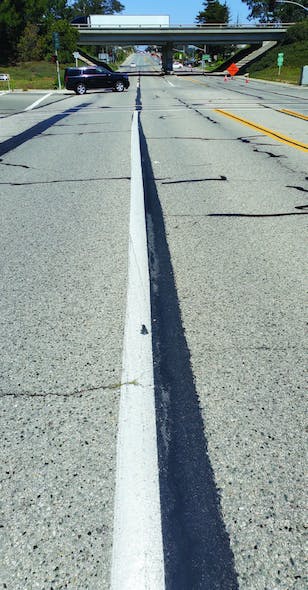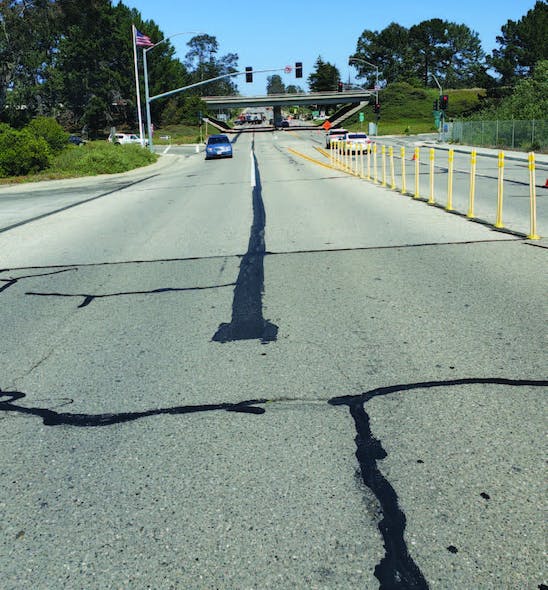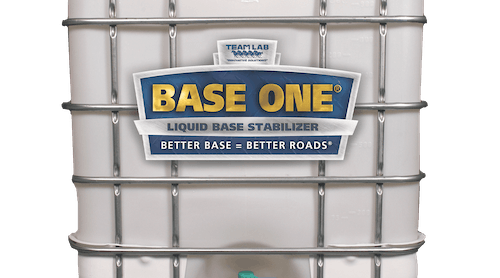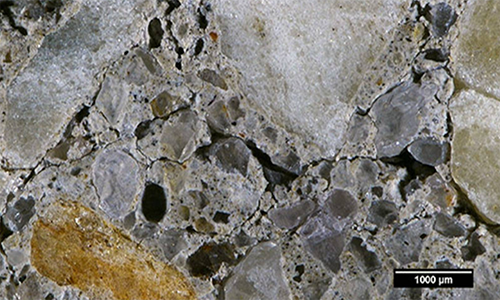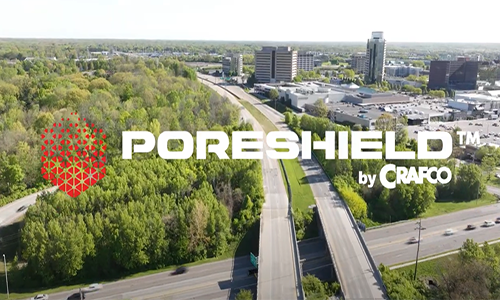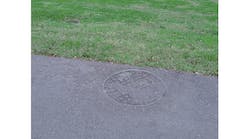Exit 17 at Clark Avenue is the first exit on California State Highway 135. The interchange serves the community of Orcutt, California – an unincorporated town in the Santa Maria Valley in Santa Barbara County – and a heavy volume of truck traffic entering and exiting the state highway every day.
In 2017, the longitudinal paving joints at the interchange had begun to unravel. “They had gone from simple cracks measuring two inches deep and two to three inches wide to an extremely wide crack, essentially creating a long linear pothole,” says Andy O’Brien, North County Road Maintenance Supervisor for Santa Barbara County.
Longitudinal cracking is a common issue on asphalt pavements. When roads are paved, the asphalt is laid in passes, creating joints or seams. As the pavement ages and experiences traffic repetition, pavement distresses accumulate, causing seams to unravel or separate and cracks develop in those seams. As it unravels, it becomes wide at the top and creates a wide crack.
Making the much-needed repairs created concerns for O’Brien and his team. The main issue they faced was the need to limit traffic disruption as much as possible. “What created a challenge for us was that, because 135 is a Cal Trans roadway, instituting lane closures and other traffic restrictions would have required a lot of red tape.”
Choosing a Solution
Traditionally, there are two options for repairing cracks in pavement like those experienced at Clark Avenue. “In the case of a low-traffic area and a smaller crack, we’d usually use a traditional crack sealer,” says O’Brien. “In cases where the degradation is larger, we’d normally use hot mix asphalt or cold mix asphalt to effect a patch. In other words, we’d fill in the hole with asphalt, which is time-consuming.”
Traditional HMA patching or mill and fill, which involves grinding out a section larger than the original problem area and filling it in with asphalt, requires considerable planning and time. The process includes milling out and cleaning the area and filling it with asphalt – as well as curing time.
Because Santa Barbara County does not encourage night work, the project needed to be completed during the day, so reducing the time needed for the repair was important. “And, considering the amount of traffic and turning motion that was happening on the section of road at Clark Avenue, the traditional HMA method would not hold up very well,” O’Brien adds.
O’Brien and his team were already familiar with Crafco products and had applied a substantial amount of Crafco crack sealant on previous repair projects. Gary Lewis, Crafco’s Territory Manager, came out and performed a demonstration of the Patcher II melter and Mastic One®, Crafco’s polymer-modified, aggregate-filled, pavement repair mastic designed for use on wide cracks and distresses on roads and highway areas that are too small for repaving.
Because Mastic One cools quickly after installation and is ready for traffic when it has solidified sufficiently to support loads, the crew was able to complete the repairs quickly and minimize disruption to traffic flow. “Mastic One is traffic ready in less than an hour from application,” O’Brien says. “With a lot of heavy trucks using that intersection, the time we saved was really important.”
Using the Crafco Patcher II melter, the crew applied 100 yards of the Mastic One material at a time with the drag box. By milling out 100 yards of the material at a time, the crew was able to save the county countless hours. The project was completed in two days with a crew of eight, versus HMA that requires a larger crew.
Additional time savings were realized because there has been no need for repeat maintenance. “We have not had to go back and do anything to any of the joints at the intersection since the original repairs,” says O’Brien. “It’s been almost five years and the [Mastic One] product has held up extremely well. If we had filled in the joints with hot mix, we believe that they would have continued to unravel at the edges. Because Mastic One fills in the void and seals off the edge, it kept the degradation from getting any worse.”
The durability of the lane markings was also a concern for O’Brien, because the joints are located where the lanes are split. He also manages Santa Barbara County’s sign and stripe crew, so he was concerned about how well the paint striping would hold up. “We’ve been pleased with how well the paint has held up. Our fears were unfounded.”
Mastic One bonds to asphalt cement concrete and Portland cement concrete pavements with a specially designed and treated aggregate that provides long-term performance of five years or more. Using Mastic One to repair wide cracks levels the uneven pavement surface, ensuring a smooth ride for vehicles. And, its flexible sealant properties continue to adhere to the pavement when the pavement moves as a result of temperature change or traffic.
Download the case study pdf here.

